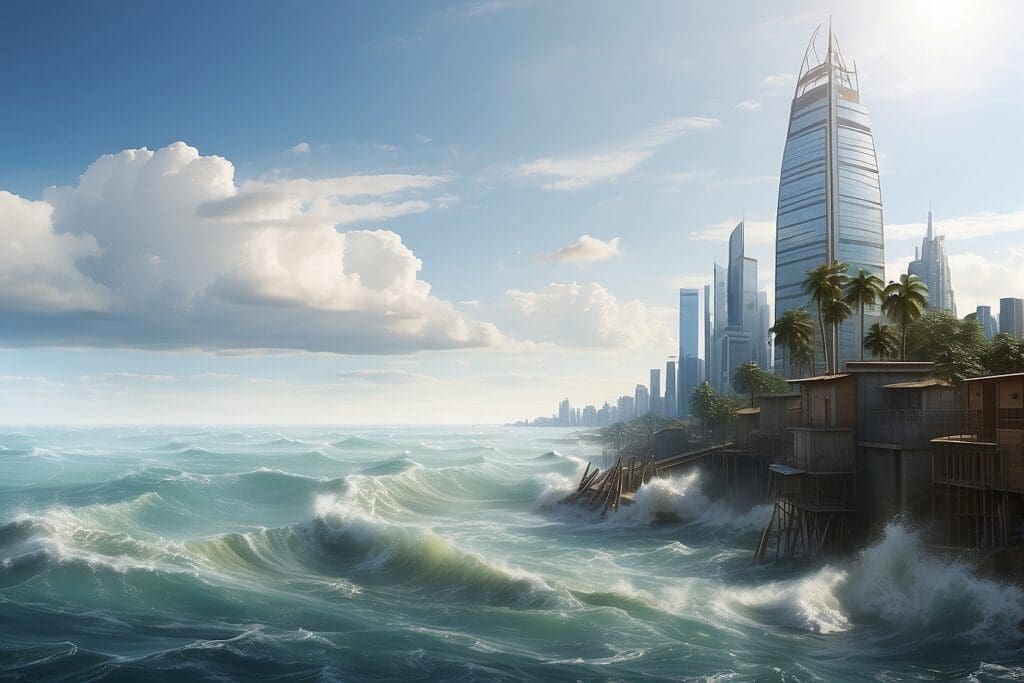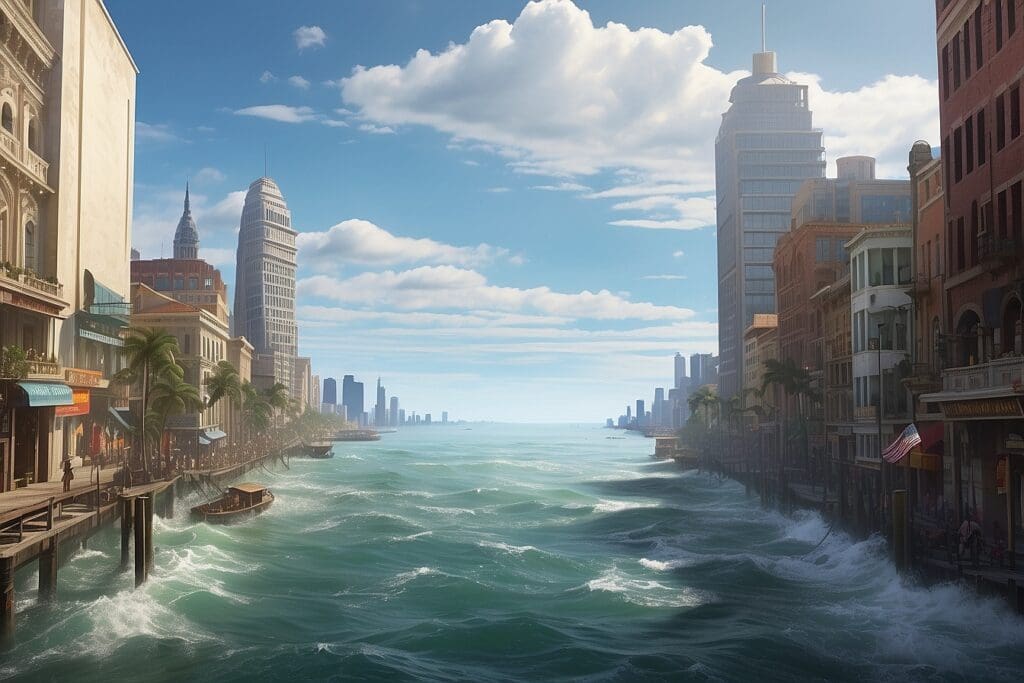Looking for a new real estate investment? With the seas arising, now may be the perfect time to invest in some higher ground in hopes of getting beach front property in 50 years! Only sort of kidding… In any resort, let’s get straight to the issue at hand, what’s the deal with rising sea levels?
Ice melt
While the landmark IPCC report on climate change ![]() only included the impacts of thermal expansion on sea level rise, much of the public’s, and increasingly the scientific community’s, attention has focused on melting of the glaciers. The potential impacts are staggering. The Greenland ice sheet contains enough ice to raise the sea level by about 7 meters if entirely melted. The West Antarctic Ice Sheet could raise sea levels an additional 5-6 meters.3 While neither of these events is going to happen anytime soon, they are beginning to melt faster than previously thought. One portion of the West Antarctic Glacier is losing about 2.5 miles each year into the ocean, nearly 50% faster than previously predicted.4
only included the impacts of thermal expansion on sea level rise, much of the public’s, and increasingly the scientific community’s, attention has focused on melting of the glaciers. The potential impacts are staggering. The Greenland ice sheet contains enough ice to raise the sea level by about 7 meters if entirely melted. The West Antarctic Ice Sheet could raise sea levels an additional 5-6 meters.3 While neither of these events is going to happen anytime soon, they are beginning to melt faster than previously thought. One portion of the West Antarctic Glacier is losing about 2.5 miles each year into the ocean, nearly 50% faster than previously predicted.4
Here’s the scary part—given its white reflective coating, ice acts as a reflective shield for the earth. In a process referred to as “albedo,” the sun’s rays are reflected off the white surface back to space, taking its heat energy with it and keeping it away from our atmosphere. When ice melts, it is replaced by the dark surface of the ocean, which is a giant heat sink, and absorbs much more of the sun’s power.

Shoreline Erosion Perhaps the factor most lost in this phenomenon is the shorelines themselves. Increased sea levels and flood activities are destroying the buffer of our coast- wetlands. Without this buffer, our shorelines are rapidly eroding ![]() as the result of increased tidal action. Many ocean shores are eroding 1-4 feet each year.5
as the result of increased tidal action. Many ocean shores are eroding 1-4 feet each year.5
The short term picture: Sea level rise in and of itself is not going to destroy cities. However, flash floods will. As the seas rise, shorelines erode, and water content of the air increases, we are far more susceptible to torrential downpours and flash floods. Levees can break, roads can flood, people and their cars and homes can be wiped away.
Effects of Rising Sea Levels
Water has a tremendous capacity to hold heat, and has for millennia served as the Earth’s buffer against rapid fluctuations in temperature. Understanding this property of water has led many to believe that we will soon reach a point where the oceans can no longer buffer our rising air temperatures, and we will soon see tremendous increases. On the other hand, others see this as a tremendous opportunity to leverage the ocean’s ability to store further increases in heat energy in our atmosphere. Some of these ideas rest on notions as far out as treating the ocean as a giant cooking bowl and stirring it up to mix the cold water from the bottom with the warming surface level waters to trap more heat. This leads us into the realm of destroying coral reefs ![]() than from increases in temperature. Anyone who has seen movies (like The Day after Tomorrow) probably has some inkling of what may happen if the ocean currents are disrupted in an attempt to geo-engineer our climate.
than from increases in temperature. Anyone who has seen movies (like The Day after Tomorrow) probably has some inkling of what may happen if the ocean currents are disrupted in an attempt to geo-engineer our climate.
Here’s the real kicker—as the ocean warms and ice shrinks, we may be in for a positive feedback loop that snowballs out of control. With less ice available to reflect the sun, and expanding water lessening its ability to hold heat, our planet will further lose its ability to regulate temperature. And with the right series of events, we may unlock the permafrost throughout Canada and Russia. If permafrost, essentially trapped organic matter, melts, it’s essentially game over. An incomprehensible level of methane would be released, which is 20 times more potent as a greenhouse gas than carbon dioxide.
So what can be done? Unfortunately, sea levels are largely linked to the primary issue of climate change. Sea level rise is not immediately visible, but you could take after climate change ![]() . Everyone matters and every step we all take towards sustainability is an investment in our Earth’s future!
. Everyone matters and every step we all take towards sustainability is an investment in our Earth’s future!





